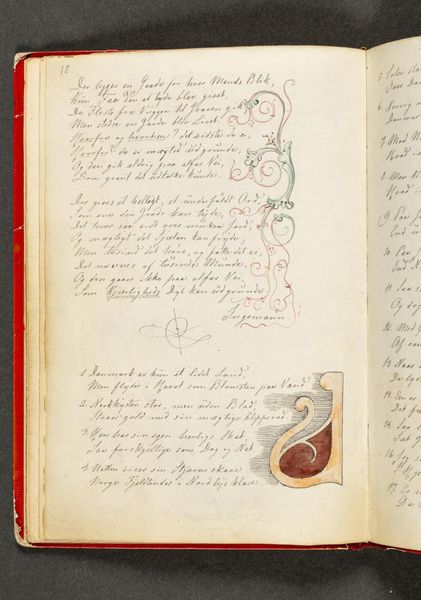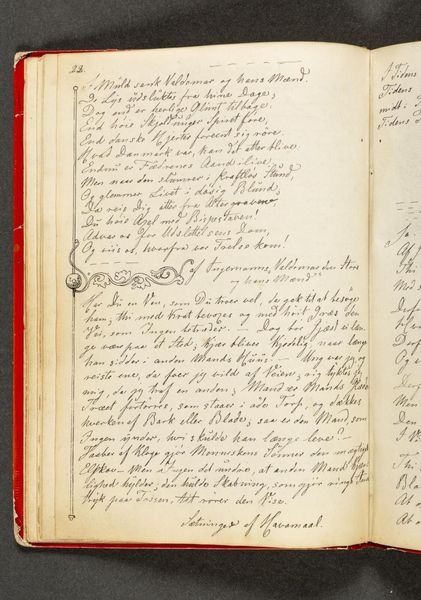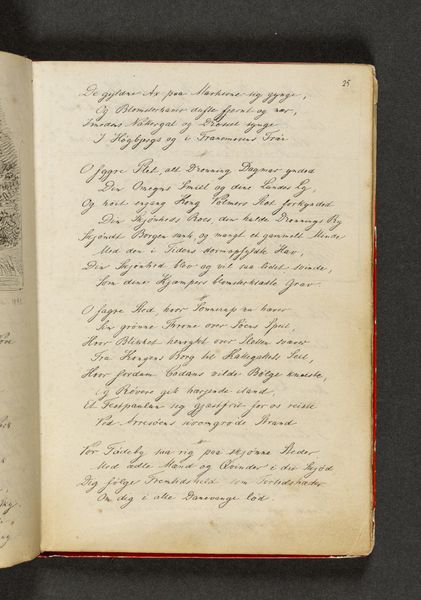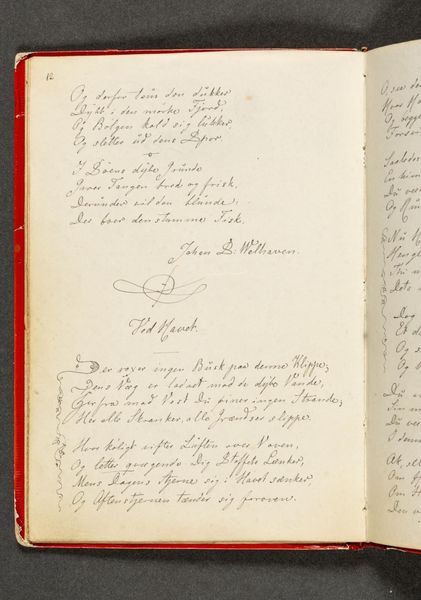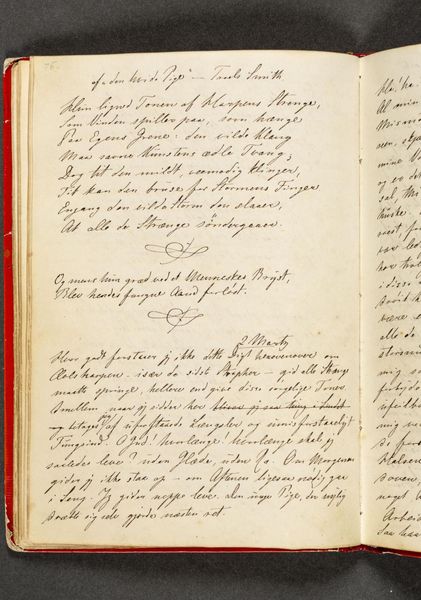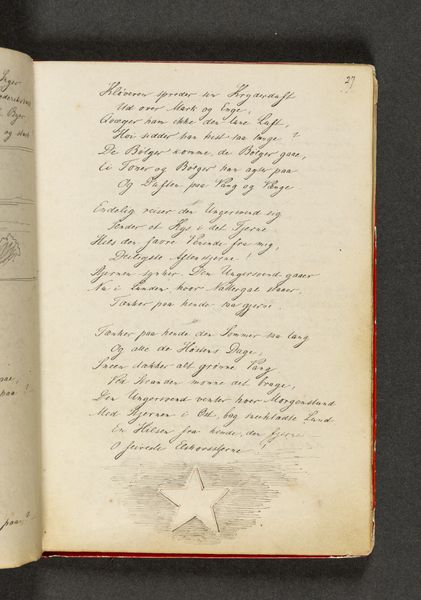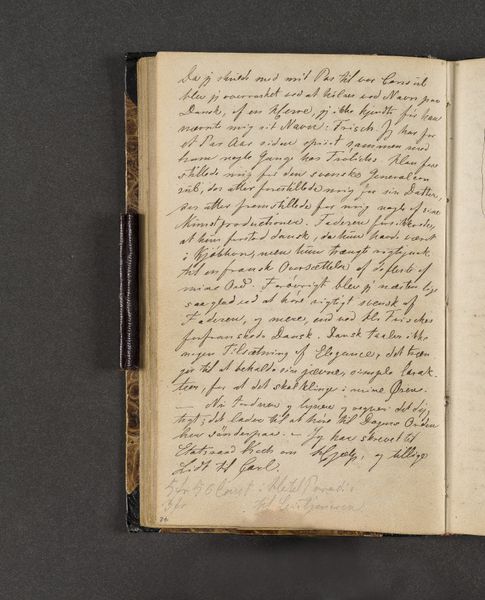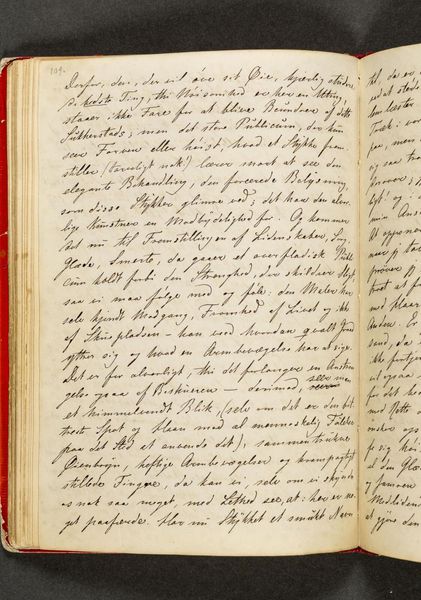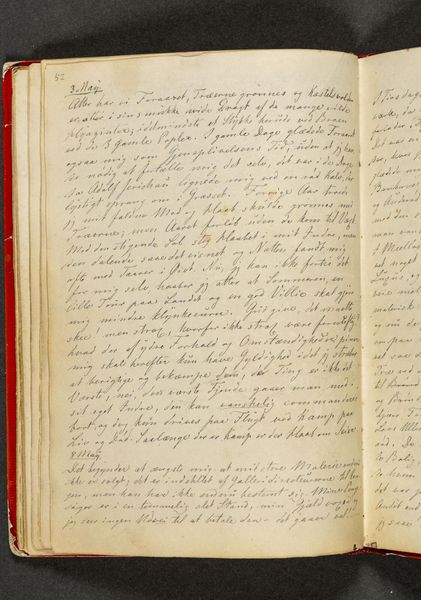
Ornamentslyng, et kors samt vers af Ingemann. Side 20 1840 - 1844
0:00
0:00
drawing, paper, ink
#
drawing
#
aged paper
#
book binding
#
sketch book
#
personal journal design
#
paper
#
personal sketchbook
#
ink
#
journal
#
romanticism
#
sketchbook drawing
#
storyboard and sketchbook work
#
sketchbook art
#
design on paper
#
miniature
#
calligraphy
Dimensions: 192 mm (height) x 133 mm (width) (bladmaal)
Curator: This sketchbook page, "Ornamentslyng, et kors samt vers af Ingemann. Side 20" by Johan Thomas Lundbye, dates from 1840-1844. The use of ink and paper give it a fragile, intimate quality, don’t you think? Editor: Yes, the fine lines of the ink drawings combined with the calligraphy create a very delicate feeling. The aged paper also adds to that effect. What's your interpretation of this combination of text, ornamentation, and religious symbol? Curator: Considering Lundbye's historical context – the rise of nationalism and Romanticism – this work could be viewed as a negotiation of faith and national identity. The inclusion of verse by Ingemann, a prominent figure in Danish literature, speaks to the importance of cultural and artistic expression for a national movement. Editor: So the cross isn’t simply a religious symbol here, but also a marker of cultural identity? Curator: Exactly! Think about how religious iconography has historically been used to define territories and peoples. Here, it's subtly woven into the larger tapestry of Danish Romantic nationalism. It begs the question: whose stories are being told, and whose are being left out? How might gender, class, or regional identities influence this depiction of Danish identity? Editor: That's a great point. It makes you wonder about Lundbye's personal relationship to these symbols and ideas, too. Was he celebrating or perhaps questioning these concepts in his private sketchbook? Curator: Precisely. The power of art lies not just in what it shows but what it invites us to question. Editor: I never considered it that way before. Seeing art as a historical object makes it even more thought-provoking. Thanks!
Comments
No comments
Be the first to comment and join the conversation on the ultimate creative platform.
